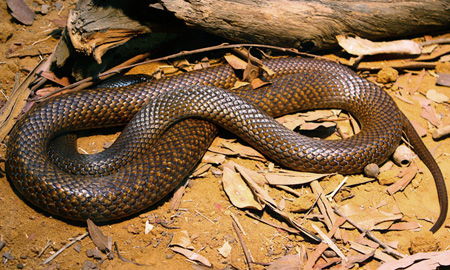Introduction
Encountering a snake in the wild can be both exciting and terrifying, particularly if that snake is understood for its potent venom. In Australia, the snake bite tiger serpent is amongst one of the most notorious and poisonous serpents, making it crucial for outdoor enthusiasts to understand just how to determine them and acknowledge the signs of their attacks. This considerable overview will certainly look into every little thing related to tiger snake experiences, concentrating especially on identifying signs and symptoms from a bite, emergency treatment procedures, and understanding their habitat.
Snake Attack Symptoms: Exactly How to Recognize a Tiger Snake Encounter
When going over snake bite symptoms, it's crucial to focus on just how these symptoms provide themselves after a tiger serpent encounter. The tiger serpent (Notechis scutatus) is extremely pertained to for its hostile nature when intimidated and its potent poison, which can create serious responses in humans.
What Does a Tiger Serpent Look Like?
Before we dive deeper right into bite signs and symptoms, knowing what a tiger snake appears like is essential for identification:
- Coloration: Tiger serpents are commonly banded with yellow or light brown red stripes against a darker backdrop. Size: They can mature to 2.5 meters in length. Head Shape: Their heads are broad compared to their necks. Behavior: Frequently discovered basking or swimming; they may present an aggressive pose when threatened.
Understanding these characteristics can assist you recognize a tiger serpent prior to an encounter escalates.
Are Tiger Snakes Venomous?
Absolutely! Tiger snakes are indeed venomous. Their poison has neurotoxins that can create paralysis and coagulopathy-- basically interrupting blood clot mechanisms. These variables make their attacks exceptionally dangerous.
Recognizing Tiger Serpent Bite Symptoms
Immediate Signs of a Serpent Bite
The onset of signs after being bitten by a tiger snake can vary based on several variables:
Initial Pain: An abrupt pain at the bite website typically occurs. Swelling: Swelling may establish around the area. Helpful site Discoloration: Bruising or redness could follow as the body reacts to the venom. Systemic Symptoms: Nausea, throwing up, migraine, sweating, and problem breathing may materialize as the poison spreads.Local Effects of Tiger Serpent Bites
Local results mostly include:
- Rapid swelling at the site Severe tenderness Possible blistering or death if untreated
Systemic Results of Tiger Snake Bites
Systemic impacts encompass broader signs and symptoms impacting different body systems:
- Neurological Signs: Lightheadedness, complication, or tingling may indicate neurotoxic effects. Cardiovascular Signs: Varying heart prices might signify significant systemic involvement.
Recognizing these immediate indicators can be vital for timely clinical intervention.
What To Do If Bitten by a Tiger Snake?
First Help for Snake Bites
Knowing just how to administer emergency treatment can be lifesaving when dealing with potential tiger serpent bites.
Stay Tranquility: Keeping one's cool helps reduce venom spread. Immobilize Influenced Limb: Maintain it still and listed below heart level. Brown whip snake Seek Immediate Medical Interest: Call emergency solutions or get to the health center as quickly as possible.Important Note: Never try to draw out the poison or use ice straight on the injury; this can intensify tissue damage.
Creating Your First Aid Set for Serpent Bites
A comprehensive first aid package must consist of products particularly valuable for managing serpent bites:
|Item|Purpose|| -------------------------------|------------------------------------------|| Compression Bandage|To incapacitate arm or leg|| Antihistamines|For allergies|| Painkiller|Manage pain till medical assistance arrives|| Emergency Get In Touch With Info|In situation of severe reaction|
First Aid Kit Basics for Australian Snakes
Ensure your package additionally includes particular items pertinent to Australian atmospheres:
Antivenom information card Clean cloths Emergency numbersUnderstanding Tiger Snake Habitat
Where Do Tiger Snakes Live?
Tiger serpents are generally discovered in numerous environments throughout Australia, consisting of:

- Coastal regions Swamps and wetlands Grasslands
They prefer locations with adequate water and plants cover where they can quest effectively.
Tiger Serpents in Tasmania
Tasmanian tiger serpents display unique features such as variations in color and size compared to mainland populations due to ecological adaptations.
Prevention Is Much better Than Treatment: Avoiding Experiences with Tiger Snakes
Safety Tips When Outdoors
When venturing right into locations recognized for tiger serpents:
Wear tough boots and lengthy pants. Always watch where you step-- especially near water sources. Avoid tall turf or dense foliage where presence is limited.By taking preventative procedures seriously, you minimize your threat of an experience altogether.
FAQs about Tiger Snakes
Q1: What do I do if I see a tiger snake? If you experience one, stay calm; retreat slowly without turning your back on it-- avoid provoking it further.
Q2: How much time does it take for signs from a bite to show? Symptoms usually show up within minutes yet can differ based upon individual reactions.

Q3: Can I use ice packs on a serpent bite? No! Applying ice packs could cause more harm than great by getting worse tissue damages around the bite area.
Q4: Are infant tiger snakes less dangerous? Yes, yet child tiger snakes still possess poison capable of triggering damage; caution is constantly encouraged despite size.
Q5: Where can I find antivenom therapy in Australia? Most medical facilities have accessibility to antivenom for typical Australian serpents; it's crucial to get to medical help without delay after a bite.

Q6: Just how fatal are tiger snake bites? Without prompt medical treatment, casualties can happen; however, early intervention dramatically enhances outcomes.
Conclusion
Understanding how to identify and respond to a prospective tiger serpent experience is important not only for individual security but likewise for fostering regard towards these fascinating creatures that occupy our communities. With understanding regarding their looks, behaviors, habitats, and reliable emergency treatment strategies at hand-- you're currently much better outfitted than ever!
By adhering purely to safety protocols while enjoying Australia's abundant natural beauty, you decrease threats associated with wild animals experiences while making sure preparedness should an unfavorable incident take place-- a real testament that knowledge is power!
Remember that remaining informed about neighborhood wild animals will certainly always enhance your outside experiences while keeping threats at bay!